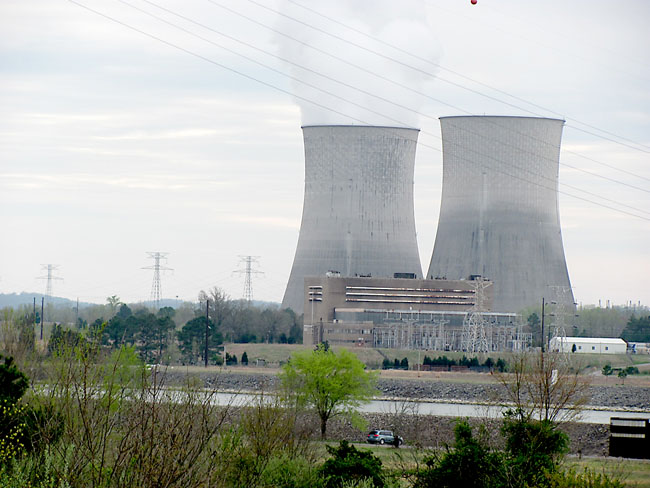Air samples collected at the Sequoyah and Watts Bar nuclear plants last week detected radioactive isotopes from the Fukushima Dai-ichi nuclear crisis in Japan, but local officials say there has been no threat to public health.
Tisha Calabrese-Benton, spokeswoman for the Tennessee Department of Environment and Conservation, said routine monitoring has turned up very low levels of iodine-131, an isotope linked to the Japanese power plant.
"These detections are 1,000 to 10,000 times below any levels of concern," Calabrese-Benton said. "They are within the range expected and are far below levels of public health concern."
She said a different set of real-time air monitors would alert officials of radioactive levels that might require immediate action.
The samples were taken March 29, and analysis took about a week, Calabrese-Benton said.
"We have also sent some rainwater samples [for analysis], but we're still waiting for those results," she said.
Within hours of the announcement, state Health Commissioner Susan R. Cooper issued a news release, saying residents have no need to purchase or take potassium iodide. The compound provides short-term protection for the thyroid gland in people exposed to radioactive iodine, one of many radioactive materials that may be released from a nuclear power plant.
"The state has a supply of [potassium iodide], but only to be used if there is an emergency or a risk of harm to Tennesseans," Cooper said. "There is neither a cause of concern nor a risk to public or individual health."
The state also is collecting air and rainwater samples in Knoxville, Nashville and Oak Ridge for the EPA's nationwide RadNet program, which collects air, precipitation, drinking water and milk samples to check for radioactivity.
EPA officials have said they are monitoring the air carefully because of the leaks and explosions at the Fukushima nuclear plant following a 9.0 earthquake and tsunami in mid-March.
Several EPA air monitors across the nation have detected very low levels of radioactive material, consistent with estimated releases from the damaged nuclear reactors, according to www.epa.gov.
EPA also has stepped up monitoring of precipitation, milk and drinking water, and officials said radioactivity detected has been far below levels of public health concern.
EPA's website states that "even an infant would have to drink almost 7,000 liters of this water to receive a radiation dose equivalent to a day's worth of the natural background radiation exposure we experience continuously from natural sources of radioactivity in our environment."
TDEC Commissioner Bob Martineau said a statement that the department regularly monitors for radiation in the environment.
"And we will continue to monitor," he said.

